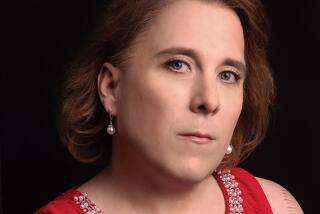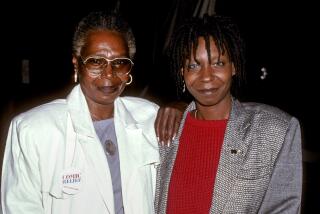Hemingway The Life and the Work<i> by Kenneth S. Lynn (Simon & Schuster: $24.95; 659 pp.) </i>
There is a rather small thesis in charge of Kenneth S. Lynn’s very large biography of Ernest Hemingway.
To relate it, skeletally: Hemingway’s fleshy, pretentious and overbearing mother would sometimes dress him in girls’ clothes when he was 2 and 3, and have him photographed along with his slightly older sister, Marcelline.
My impression of sepia photographs circa 1900 is that it was not altogether uncommon to dress tiny boys in girlish clothes. But Kenneth S. Lynn sees in it the beginning of a lifelong sexual hang-up.
Hemingway’s male warrior-hunter self-image was a cover for a partly feminine nature, Lynn holds, and he investigates his writing for evidences of it. For example, in the short story, “Up in Michigan,” the writer portrays a quasi-rape not from the man’s point of view, but from the woman’s.
True enough; well observed, and possibly evidence for arguing that insofar as he was an artist--rather than a self-caricaturing life-styler--Hemingway commanded a range of sensibility that encompassed both sexes. So did Tolstoy, Shakespeare and Sophocles, of course.
The trouble is that Prof. Lynn allows the point to hijack his nicely loaded general-cargo vessel and sail it onto some precipitous rocks. He treats it as a drastic and hitherto unsuspected secret; one that must radically upset our notion of the man and the writer.
Accordingly, Lynn conducts a kind of sexual stowaway-chase through Hemingway’s novels and short stories. He is looking for women who cut their hair short and are sexually aggressive, and for men who like to make love belly-up.
In “The Garden of Eden,” the point is conspicuous and has been considerably remarked upon. Catherine gets a haircut to resemble David’s and their love-making deliberately mixes up their sex roles. But of course, “Garden” was a swollen collection of drafts and false starts, drastically edited after Hemingway’s death into a small and shaky book. It is hard to figure what in the way of a general statement can be derived from it about the artist and man, as opposed to the disintegration of the artist and man.
Lynn goes to the major works, but his point shrinks as he does so. With the other Catherine, in “A Farewell to Arms,” he notes her short hair and the fact that she was the nurse and Frederic the patient for the early part of their relationship, and that Frederic was on his back in a hospital bed.
In “The Sun Also Rises,” he observes: One, that the first name of Jake Barnes is short for Jacob; two, that two leading American expatriates, Natalie Barney and Djuna Barnes--note the surnames--were lesbians and lived on the Rue Jacob and in the Hotel Jacob, respectively; three, that Jake’s love, Brett Ashley, was sexually forward and had a first name that could be a man’s; and fourth, that Jake was incapable of the act of penetration.
Of course, this is more than coincidence, and it was clever of Lynn to make the connections. Whether they signify more than an inside literary joke is another question; one that the author doesn’t really answer.
With “For Whom the Bell Tolls,” Lynn goes so far as to assert that critics, who hailed the book as a sign of recovery from the writer’s long decline, missed two of the really significant things about it. One of these is what he calls the “obsession with death.” Whether “obsession” is the right word, considering the subject--the hopelessly murderous Spanish Civil War--is at least debatable. The second major point, he writes, is “the curiousness of the love affair.” Sure enough, this consists of Maria’s short hair and the fact that in their love-making, she and Robert Jordan felt that they had become indistinguishable from each other.
To be surprised that the critics didn’t pick out short hair and the fusing of two lovers, as a key to the novel, may indicate how far Lynn has let his theme run away with him. After all, he does not claim that Hemingway was a homosexual, still less a lesbian. Short of that, the particular kind of sexual fantasy Hemingway gave to his protagonists seems to me of interest, but not infinite interest. It casts a modest, though real light, but Lynn has overcharged it with outsize batteries.
Thesis apart, Lynn’s “Hemingway” is a thorough, detailed and often sensitive job. I don’t think it provides any major new insights about this most abundantly written-about writer, but it documents extensively the largely familiar story: the Chicago childhood, the hunting trips in Michigan, the early days as a reporter, life on Paris’ Left Bank, the bullfights, the safaris, the marriages, the pain of a writer’s decline and the deadly drinking and carousing that went with it.
Sometimes the detail seems little more than scholarly pugnacity; an attempt to stake out a tiny plot in an overcrowded field. Pages are spent taking issue with others over the precise nature of the leg wound Hemingway incurred serving in the Red Cross in World War I, and over just how brave he had been. Were there bullets in the wound as well as shrapnel? What precise degree of prowess was indicated by the Italians’ award of a silver rather than a gold medal?
Lynn’s thoroughness, on the other hand, is useful in making more understandable the mercurial quality of Hemingway’s moods; his ability to be generous, winning and brutal without apparent transition; his tendency to turn upon and discard those friends and lovers upon whom he expended such energy and genius in acquiring. He is frequently illuminating in his efforts to show links between facets of Hemingway’s life and its reflections in his highly autobiographical work.
The pain, lifelong, is spelled out vividly. Lynn’s Hemingway is a man of rankling resentments. He wanted to be godlike as hero, lover and artist, but had serious shortages in each department.
He could be disastrously clumsy as an outdoorsman, he was perpetually getting sick or hurt, his sexual abilities seem to have been erratic, and when he was not a very, very good writer he was often a very, very bad one.
Falling short or running dry was unacceptable agony. He could not allow himself to age. Instead, he engaged in a slow, spectacular suicide that called itself living life to the full, until it stopped calling itself anything.
More to Read
Sign up for our Book Club newsletter
Get the latest news, events and more from the Los Angeles Times Book Club, and help us get L.A. reading and talking.
You may occasionally receive promotional content from the Los Angeles Times.






